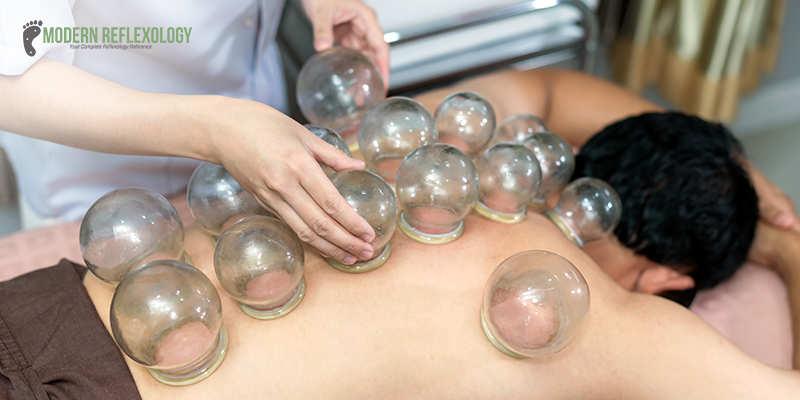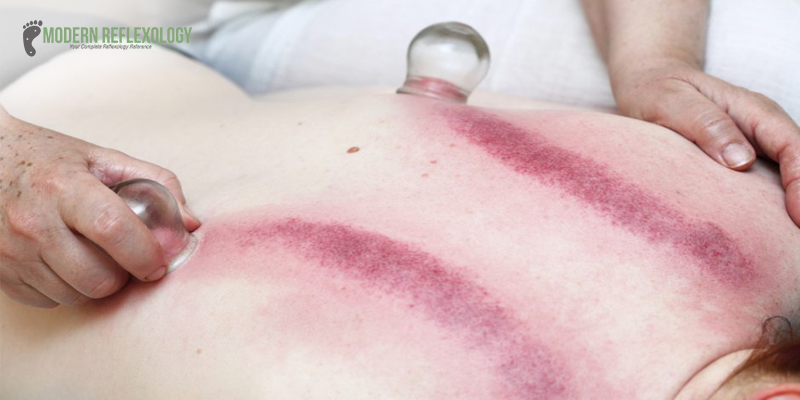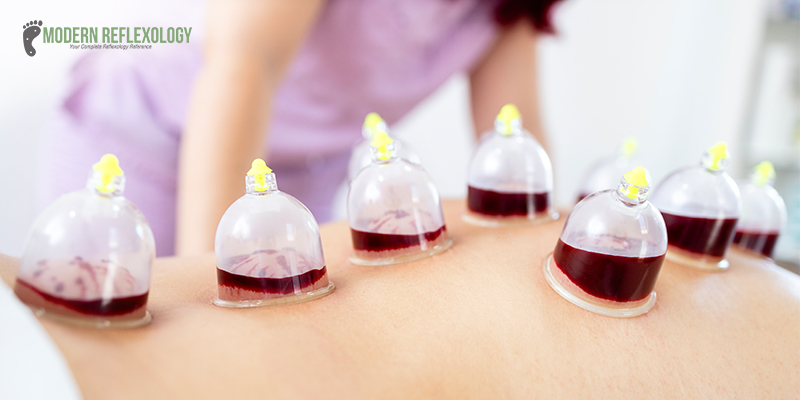An age-old therapeutic technique called cupping therapy may help with headaches, neck and back discomfort, and other problems. It draws on your skin using suction to improve blood flow to the injured area. Cupping can result in skin infections and bruises. Although there is conflicting data regarding the advantages of cupping, there are usually few side effects.
Cupping therapy has been used for thousands of years in many different civilizations. Its origins are in traditional medicine, but as individuals look for alternative methods to improve their physical and emotional health, it has found a home in contemporary wellness. We start our blog by understanding the fundamentals of cupping therapy, including its definition, mechanism of action, and cultural importance.
What is Cupping Therapy?
Some people utilize cupping therapy, an age-old healing method, to reduce discomfort. The giver applies Cups to your arms, legs, back, stomach, and other body regions. Your skin is drawn upward by a vacuum or suction force inside the cup. Cupping therapy is a type of traditional medicine rooted in West Asia and China. This is a method that people have used for thousands of years. Cup therapy, suction cup therapy, and cupping are some other names for cupping set therapy.
Many think cupping aids in the body’s yin and yang or positive and negative balance. Reestablishing equilibrium between these two extremes is believed to aid the body’s capacity to boost blood flow, lessen pain, and resist infections.
The act of cupping improves blood flow to the surrounding tissue. This ease tense muscles, enhancing blood flow generally and encouraging cell growth. Additionally, it might aid in forming new blood vessels and connective tissues in the tissue.
Types of Cupping Therapy
There are various techniques for cupping. The stages differ slightly based on the approach that is selected. Your provider will leave the cups in place for a few minutes. The region is stretched and massaged in certain treatments by briefly moving the cups. Some types of cupping therapy are:
Dry Cupping Therapy

Your provider heats each cup’s interior. The conventional technique entails lighting a cotton ball soaked in alcohol on fire. The vacuum is caused by the heat forcing oxygen out of the cup. A more contemporary method includes emptying the cups of air using a suction mechanism. Your skin is drawn upward into the cup by the vacuum force.
Running

It’s like dry cupping. However, your healthcare professional will apply oil or lotion to your skin before starting. After the cups are in place, they will carefully slide them over the afflicted portion of your body in various directions.
Bleeding

Before applying the cups, your healthcare provider softly punctures your skin with a needle. This makes it possible for the suctioned blood trapped in the cup to release toxins.
How Does Cupping Therapy Work?
Your therapist will light a combustible item—such as paper, alcohol, or herbs—in a cup during the cupping procedure. When the fire goes out, they place the cup upside down on your skin. A vacuum is created in the cup when the air within cools. Your skin rises and becomes redder because of your blood vessels expanding. Usually, the cup is left in place for a maximum of three minutes. A more recent variation of cupping creates the vacuum within the cup using a rubber pump rather than fire. Therapists occasionally use silicone cups, which may rotate across your skin to simulate a massage.
Wet cupping involves leaving a cup in place for roughly three minutes, which produces slight suction. After removing the cup, the therapist lightly inclines tiny cuts across your skin using a small scalpel. They then perform a second suction to extract a tiny amount of blood. In your first session, you can receive three to five cups. Or you might give one a shot and see how it goes. To stop infection, you can then receive a bandage and antibiotic ointment. In ten days, your skin should look normal again.
Cupping Therapy Benefits
There are plenty of benefits of cupping therapy set. However, most of these haven’t been scientifically proven, and the research is still being carried out. Some prominent benefits of cupping therapy are:
- Promotes muscle relaxation
- Decreases pain
- Enhances blood flow
- Immune system activation
- Releases toxins
- Eliminates heavy metals and wastes
Cupping Therapy Side Effects:
The adverse consequences of cupping are relatively low. The negative effects that you can encounter usually happen during or right after your therapy, and they include:
- Circle stains where the cups were
- Discoloration
- Dizziness
During your therapy, you can feel faint or lightheaded. On rare occasions, you might also feel queasy or perspire. Following treatment, there’s a chance that the skin around the cup’s rim will get inflamed and dotted in a circle. Post-session, you can experience pain at the sites of your incisions.
Additional Dangers Consist of
- skin scarring (bruising)
- hematoma
See your practitioner if any of these problems arise for you. They suggest treatments or actions you can take to help you avoid any discomfort before your session.
How Long does the Session Last?
When dry cupping, the cup is left in place for a predetermined amount, typically five to ten minutes. When using wet or bleeding cupping, the practitioner creates a tiny incision to extract blood and then purposefully uses the cup’s suction to remove any remaining blood. Oil is typically applied before using suction when running cupping. After that, the cups are gradually moved throughout the region to simulate a massage. Your appointment may be anywhere from ten minutes to an hour or longer, depending on the type of service you’re getting. When flash cupping, the cups are usually released in the same generalized body area after a brief suctioning. Typically, this takes five to ten minutes.
Final Words
To summarize, cupping therapy is an intriguing alternative medicine technique with centuries of history based on conventional therapeutic methods. It’s clear from our examination of the definition, applications, kinds, advantages, and possible drawbacks of cupping therapy that there are many reasons why this all-encompassing strategy has grown in favor.
Cupping therapy has many uses that demonstrate its adaptability, from reducing pain and inducing relaxation to treating respiratory disorders and improving general well-being. Various cupping techniques are tailored to specific health conditions and personal preferences, making cupping a customized alternative for people looking for natural solutions.

Comments are closed